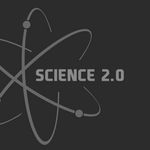Optics

Science fiction writers have long envisioned sailing a spacecraft by the optical force of the sun’s light. But, the forces of sunlight are too weak to fill even the oversized sails that have been tried. Now a team led by researchers at the Yale School of Engineering&Applied Science has shown that the force of light indeed can be harnessed to drive machines — when the process is scaled to nano-proportions. Their work opens the door to a new class of semiconductor devices that are operated by the force of light. They envision a future where this process powers quantum information…

Multiple high-definition videos and other data-rich services may soon stream through homes, offices, ships and planes via new hybrid optical/ultra-wideband-radio systems developed by European researchers.
Moshe Ran, Coordinator of the EU-funded project, UROOF (Photonic components for Ultra-wideband Radio Over Optical Fiber), has a vision. He wants to see streams of high-definition video and other high-bandwidth services flowing through homes, office buildings, and even ships and planes, through a happy marriage of optical and ultra-wideband radio technologies.
“It’s a natural combination that…

The name has been around for four decades, but only now is a recognizable photonics community emerging in Europe. A European study has documented a fast-growing sector of more than 2100 companies and 700 research laboratories.
In 2005, Europe’s photonics sector earned €43.5 billion and was growing at 12% a year. It employed 246,000 people, accounted for 19% of world production and was already bigger than the semiconductor sector. Yet, at the same time, the industry was hardly recognized in Europe.
So what is photonics? As a scientific discipline it includes everything to do with the…

Optical science has taken another leap forward. Increasing amounts of technologies rely on the usage of optic fibers for transmission of phone calls, TV broadcasts, and the internet. Optical fibers allows a higher bandwidth which means faster downloads, and connections.
A team of researchers from Clemson University, headed by Professor John Ballato, have devised a new optic fiber, containing a silicon core. Their findings, published in Optics Express (1), have propelled optic science into a new wave of applications for optic fibers.
Ballato’s team was able to create this silicon optic fiber…

Novel Solid-State Laser Design Based on Synthetic Diamond From Element Six Opens up New Applications
ASCOT, England, October 14 /PRNewswire/ -- Researchers at the Institute of Photonics, University of Strathclyde, have started work on a 3.5 year project to develop a novel solid-state laser design incorporating CVD (chemical vapour deposition) diamond manufactured by Element Six Ltd. Element Six leads the world in the field of CVD diamond synthesis and its application.
The development of a diamond Raman laser could open up a raft of new application areas in, for example, underwater imaging, medical imaging, ophthalmology, cancer therapy and multispectral imaging. The project will be led by…

LBG J2135-0102 (also known as the "Cosmic Eye" due to its morphological similarity to the Egyptian "Eye of Horus") was discovered from a Hubble Space Telescope (HST) image in an effort to survey high redshift galaxy clusters. This galaxy is a typical star-forming galaxy at z=3 (seen when the Universe was only two billion years old) which has been gravitationally lensed by a factor 28x by a foreground galaxy cluster. The discovery paper can be found in Smail et al. (2007) ApJL 654 33 , whilst the detailed lens modelling used to correct for the lensing distortion is available in Dye et al. (…

Scientists at the University of Liverpool have tested an ‘invisibility cloak’ that could reduce the risk of large water waves overtopping coastal defences.
Mathematicians at Liverpool, working with physicists at the Centre National de la Recherche Scientifique (CNRS) and Aix-Marseille Universite have found that coastal defences could be made ‘invisible' when water is guided through a special structure made of metamaterials.
Metamaterial was first invented by Sir John Pendry at Imperial College London where scientists discovered that this unique structure could bend electromagnetic radiation…

A record two-hour observation of Jupiter using a new technique to remove atmospheric blur has produced the sharpest whole-planet picture ever taken from the ground. The series of 265 snapshots reveal changes in Jupiter's smog-like haze, probably in response to a planet-wide upheaval more than a year ago.
Being able to correct wide field images for atmospheric distortions has been a goal for decades. The new images of Jupiter prove the value of the advanced technology used by the Multi-Conjugate Adaptive Optics Demonstrator (MAD) prototype instrument mounted on ESO's Very Large Telescope (VLT…

Prof. Leonid Yaroslavsky from Tel Aviv University believes that humans may have an ability to "see" colors and shapes - with their skin.
He outlines his 'optic-less imaging model' in a chapter of a new book, "Advances in Information Optics and Photonics", and even says it could lead to a new form of optical imaging technology that beats the limitations of today's lens-based imaging devices. This model, he says, may also explain how a controversial primordial instinct might have evolved over millions of years.
Conceptually, 'skin vision' exists in nature, he says, and uses the examples of…

Astronomical instruments needed to answer crucial questions, such as the search for Earth-like planets or the way the Universe expands, have come a step closer with the first demonstration at the telescope of a new calibration system for precise spectrographs. The method uses a Nobel Prize-winning technology called a 'laser frequency comb', and is published in this week's issue of Science.
"It looks as if we are on the way to fulfil one of astronomers' dreams," says team member Theodor Hänsch, director at the Max Planck Institute for Quantum Optics (MPQ) in Germany. Hänsch, together with John…